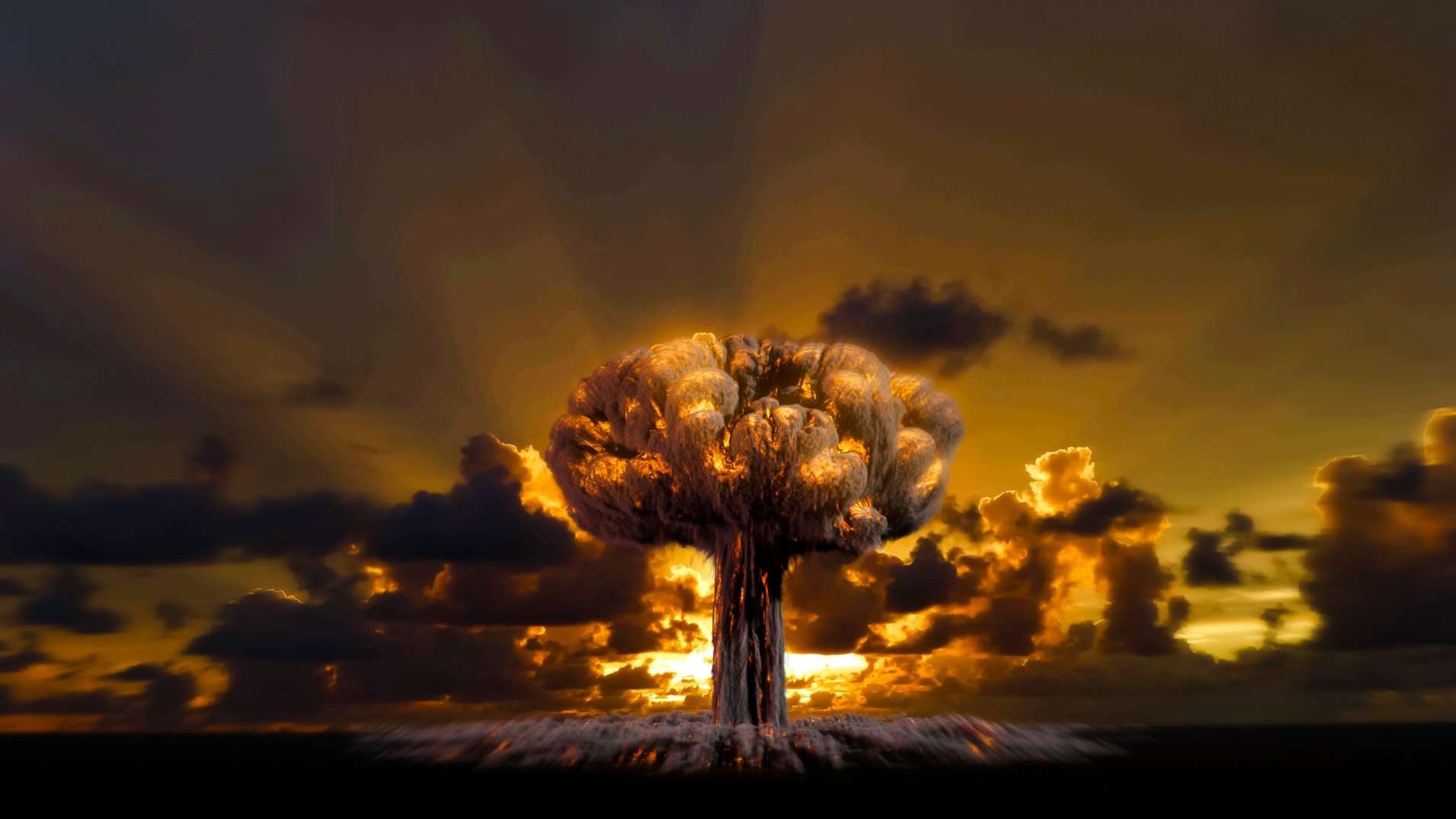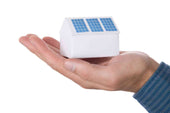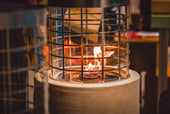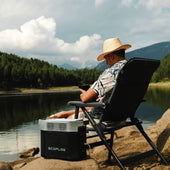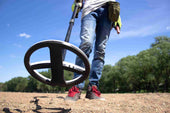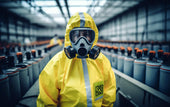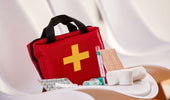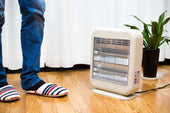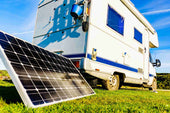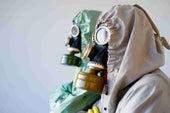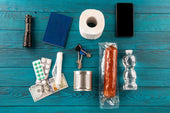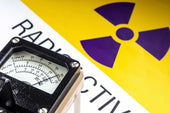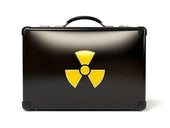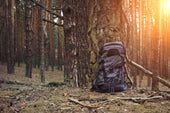Nuclear Emergency In The First Few Hours
 As soon as a nuclear bomb explodes, an intense flash of light and a gigantic fireball come into being —releasing tons of energy and producing a staggering shockwave.
As soon as a nuclear bomb explodes, an intense flash of light and a gigantic fireball come into being —releasing tons of energy and producing a staggering shockwave.
Especially if the weapon is big, you can expect to experience a gigantic explosion and aftermath as well, with all things considered, such as the proximity of the bomb and how it exploded.
The Centers for Disease Control and Prevention suggests individuals within the vicinity of the "blast" safeguard themselves by dismissing and protecting their eyes, dropping to the ground with their face down and hands tucked under, and, if possible, covering their nose and mouth with fabric.
Moreover, it is important to note that any structure (or building) is more secure than outside; the best safe houses are multi-story brick or concrete buildings with a few windows or a basement.
Immediately after the fallout cloud has passed, survivors should shut down ventilation systems and seal doors, windows, and other entryways.
In the meantime, avoid rooftops and external walls where the aftermath settles. Those outside during the impact should remove tainted external wash uncovered body parts.
You should also know that there are three major kinds of nuclear emergencies:
Nuclear Explosion
An explosion with intense light and heat, a harmful pressure wave, and a wide scattering of radioactive material can sully the air, water, and ground surfaces for a significant distance. In addition, an atomic weapon can transform from a huge weapon conveyed by a missile to a small, convenient atomic weapon moved by a person.
Hazards related to nuclear explosions:
-
Bright flashes can cause temporary blindness for less than a minute.
-
Blast waves can cause death, injury, and damage to structures several miles out from the blast.
-
Radiation can damage the cells of the body. Large exposures can cause radiation sickness.
-
Fire and heat can cause death, burn injuries, and damage to structures several miles out.
-
An Electromagnetic Pulse (EMP) can damage electrical power equipment and electronics several miles from the detonation and cause temporary disruptions further away.
Nuclear Fallout
Minute particles of radioactive debris plunge slowly from the air after a nuclear explosion.
Radiation Emergency
A radiation emergency occurs when energy from a source travels at the speed of light. This energy has an electric and magnetic field related to it and conveys wave-like properties.
Due to the recent surge in terrorism, many people have expressed concern about the likelihood and consequences of a nuclear blast. Consequently, many are also interested in researching what a nuclear explosion involves and the dos and don’ts during such an unfortunate event.
In this article, we will discuss...
All About Nuclear Blast Wave
 As per the Centers for Disease Control and Prevention or CDC Guidance, here's all that you need to know about nuclear explosions:
As per the Centers for Disease Control and Prevention or CDC Guidance, here's all that you need to know about nuclear explosions:
1.1 What is a Nuclear Explosion?
A nuclear blast, created by the explosion of an atomic or nuclear bomb (sometimes referred to as a nuclear detonation), involves the fission of atoms to deliver intense pulses or waves of heat, light, air pressure, and radiation. Major examples include the bombs dropped on Hiroshima and Nagasaki, Japan, toward the end of World War II, which ultimately resulted in devastating atomic impacts.
When a nuclear device is detonated, a huge fireball is created. Everything within this fireball, including soil and water, disintegrates and is carried upwards, creating the mushroom cloud we often associate with an atomic impact, explosion, or blast.
Radioactive material from the nuclear device mixes with the vaporized matter in the mushroom cloud. As this disintegrated radioactive material cools, it becomes dense and forms particles. At that point, the radioactive material falls to the earth, known as fallout.
Since fallout occurs in particles, it can be carried over significant distances by wind currents and end up miles from the blast site. As such, the fallout is radioactive and can contaminate anything it lands on, including food and water supplies, making it dangerous to humans.
1.2 What are the effects of a Nuclear Blast?
The "impact" of a nuclear blast largely depends upon the size of the bomb and its distance from the people. Be that as it may, an atomic impact would probably cause incredible obliteration, a good number of deaths, and injuries and have a wide area of effect.
In a nuclear blast, injury or death may happen because of the actual impact itself or because of debris tossed from the explosion. Individuals might encounter moderate to extreme skin burns, contingent upon their proximity to the explosion site.
As such, people who gaze directly at the impact may experience a range of visual impairments, from temporary blindness to serious burns on the retina.
Moreover, people close to the impact site would be exposed to elevated degrees of radiation, which could foster side effects of radiation infection (called acute radiation syndrome, or ARS).
While serious burns would appear in minutes, other health effects could take days or weeks. These impacts range from mild, such as skin reddening, to serious, like cancer and death, depending on the amount of radiation the body consumes (the portion), the sort of radiation, the course of the exposure, and the timeframe of the exposure.
People may encounter two types of exposure to radioactive materials from an atomic impact: external and internal.
External Exposure
This happens when individuals are exposed to radiation beyond their bodies from the impact or its fallout.
Internal exposure
This happens when individuals eat food or inhale air debased with radioactive aftermath.
Internal and external exposure from the aftermath could happen miles from the impact site. Exposure to exceptionally huge portions of outer radiation might cause death within a couple of days or months.
Likewise, external exposure to lower dosages of radiation and internal exposure from breathing or eating food debased with radioactive aftermath might prompt an expanded risk of developing disease and other negative health effects.
1.3 How can I protect my family and myself during a nuclear blast?
A national emergency response plan, including federal, state, and local agencies, would be activated in case of a nuclear explosion.
As such, the following practices are suggested by the World Health Organization if a nuclear blast occurs:
If you are close to the explosion area when it happens:
-
Turn away and close and cover your eyes to avoid harming your eyesight.
-
Drop to the ground face down and place your hands under your body.
-
Stay flat until the heat and two shock waves have passed.
Assuming that you are outside when the explosion happens:
-
Grab something to cover your mouth and nose, like a scarf, handkerchief, or other fabric clothing.
-
Brush, shake, and clean your clothes in a ventilated area to remove dust (or residue). However, you must cover your mouth and nose while you do this.
-
Move to a shelter, storm cellar, or basement idea, ideally to an area away from the course where the wind is blowing.
-
If possible, remove your clothes since they may be contaminated. Wash your hair and change clothes before entering the shelter.
On the off chance that you are now in a safe house, shelter, or basement:
-
Cover your mouth and nose with a face mask or other material (like a scarf or tissue) until the fallout cloud has passed.
-
Stop ventilation systems and seal doors or windows until the aftermath fallout has passed. Nonetheless, after the aftermath cloud has passed, unlock the doors and windows to permit some airflow.
-
Remain inside until proper authorities say it is safe to come out.
-
Listen to the radio or television for information and updates. Be ready if you are directed to remain in your shelter or evacuate to a more secure spot away from the area.
-
Cover your mouth and nose with a damp towel if you go out.
-
Utilize stored drinking water during this emergency. If possible, avoid consuming food or beverages from contaminated water supplies.
-
Clean and cover any open wounds on your body.
If you are advised to evacuate:
-
Pay attention to the radio or TV for information about evacuation routes, temporary shelters, and certain steps to follow.
-
Before you leave, close and lock windows and doors and turn off the air conditioner, vents, fans, and heater. While you're at it, close the fireplace dampers.
-
Take disaster supplies (i.e., flashlight with extra batteries, battery-operated radio, first aid kit, manual, emergency food, water, nonelectric can opener, basic and essential medications, cash, credit cards, and solid footwear).
-
Remember and consider your neighbors who may need special assistance, particularly babies, elderly people, and people with inabilities.
Health Risks Associated with Radiation Exposure
 The kind of health risk that is associated with nuclear radiation relies heavily on how much radiation the body absorbs or retains. For instance, those exposed to high degrees of radiation, around 200 rem (2000 millisievert ), could foster radiation sickness.
The kind of health risk that is associated with nuclear radiation relies heavily on how much radiation the body absorbs or retains. For instance, those exposed to high degrees of radiation, around 200 rem (2000 millisievert ), could foster radiation sickness.
Certain individuals are explicitly impacted by exposure to various kinds of radiation sources. Experts are engaged in discussing the potential health risks of radiation exposure.
These include:
-
The size of the dose (amount of energy deposited in the body)
-
The ability of radiation to harm human tissue
-
Which organs are affected
Hair
The rapid loss of hair and in clusters happens with radiation exposure at 200 rems and above.
Brain
As we all know, brain cells do not reproduce, so they won't be harmed except if the exposure is 5,000 rems or even more. Like the heart, radiation kills nerve cells and small blood vessels and can cause seizures and prompt death.
Thyroid
Certain body parts are more impacted by exposure to various radiation sources than others. The thyroid organ is defenseless to radioactive iodine. In adequate sums, radioactive iodine can obliterate all or part of the thyroid. Just a piece of advice: taking potassium iodide can lessen the impact of openness.
Blood System
Exposure to around one hundred (100) rems can reduce the blood's lymphocyte cell count, making a person more susceptible to infections and diseases. This is often referred to as mild radiation sickness. It may also be associated with flu-like symptoms.
As indicated by information found from nuclear incidents in Hiroshima and Nagasaki, side effects might last for as long as ten (10) years. They may likewise have an expanded long-term risk for leukemia and lymphoma.
Heart
Serious exposure to radioactive material at 1,000 to 5,000 rems would cause quick harm to little veins and most likely cause cardiovascular or heart failure and, worse, death.
Gastrointestinal Tract
Radiation damage to the lining of the digestive system will cause nausea, bloody vomiting, and diarrhea. This occurs when the casualty is exposed to excessive levels of radiation. The radiation will begin to obliterate the cells in the body that divide rapidly, including skin, reproductive, and hair cells, and it ultimately threatens the RNA of the surviving cells.
Reproductive Tract
Since reproductive tract cells partition quickly, this body region can be harmed at rem levels as low as 200. In the long run, some radiation ailment casualties will become sterile.
Long after the intense impacts of radiation have subsided, radiation harm keeps on delivering a large number of physical issues. These impacts include leukemia, disease, and numerous others two, three, and even decades after the fact.
Blood Disorders
According to Japan, the bombing incident caused an increased iron deficiency. The decrease in white and red blood cells continued for a decade after the bombardment.
Cataracts
There was also an increase in the cataract rate of the survivors at Hiroshima and Nagasaki, who were halfway protected and experienced fractional hair loss.
Malignant Tumors
All ionizing radiation is cancer-generating. However, some tumor types are more promptly produced than others - with one prevailing type called leukemia.
The malignant growth frequency among survivors of Hiroshima and Nagasaki is essentially bigger than that of the general population, and a critical relationship between exposure level and level of occurrence has been accounted for thyroid disease, breast cancer, lung cancer, and malignant growth of the salivary organ.
Oftentimes, it takes ten (10) years or more before radiation-caused malignancies show up.
Keloids
Starting in mid-1946, scar tissue covering mended burns expanded and developed abnormally.
Mounds of raised and twisted tissue, called keloids, were found in 50 to 60 percent of those burned by direct exposure to the heat beams inside 1.2 miles of the hypocenter.
Fundamentally, keloids are heavily associated with the damaging effects of radiation.
What To Do Nuclear Attack: An Overview
 In conclusion, nuclear preparedness is as important as any other emergency plan. Any nuclear explosion creates radiation, heat, and blast effects that will bring about numerous rapid fatalities.
In conclusion, nuclear preparedness is as important as any other emergency plan. Any nuclear explosion creates radiation, heat, and blast effects that will bring about numerous rapid fatalities.
Harmful radiation can pose a threat, disrupt human services, and result in a scarcity of food supplies.
Therefore, it should be considered an emergency plan to address the damage caused by particles and have provisions for consumption while waiting for assistance from local authorities or emergency response officials.
Ultimately, a nuclear event is no longer a story of impossibility —it is a current issue and can happen anywhere and anytime without a prelude. So, it is your best bet to prepare as early as now.
Go stock up on your emergency supplies, prepare your first-aid kit, and purchase all necessary survival gear and equipment. Those with everything prepared have a better chance of surviving a disaster than those without.

